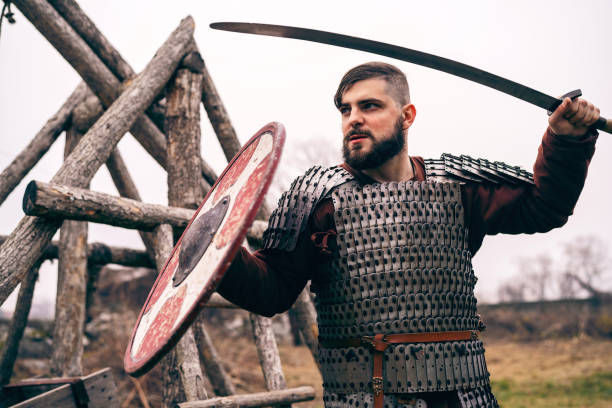Introduction
In the diverse world of martial arts, Arnis, also known as Eskrima or Kali, stands out as a captivating and dynamic discipline. Hailing from the Philippines, Arnis is a martial art with a rich history, a wealth of techniques, and a growing global following. In this 1200-word exploration, we’ll delve into the world of Arnis, its origins, techniques, and its modern-day significance.
I. The Origins of Arnis
Arnis is deeply rooted in the history and culture of the Philippines. It was developed as a form of self-defense against invaders, primarily by the Filipino people, who were often subjected to foreign colonization. The origins of Arnis date back to pre-colonial times, and its history is a testament to the resilience and adaptability of the Filipino people.
- Pre-Spanish Influence
Before the arrival of Spanish conquistadors in the 16th century, the Filipino archipelago was home to various indigenous martial arts. These indigenous arts played a significant role in the development of Arnis, providing the foundation upon which it was built. The Filipinos had a long history of using bladed weapons and other combat techniques for warfare and self-defense.
- Spanish Influence
During the Spanish colonial period, the practice of Arnis was suppressed by the colonizers, who feared its potential for rebellion. However, Arnis was secretly passed down through generations. The Filipinos ingeniously concealed their martial arts training by disguising it as a harmless dance, allowing them to preserve their cultural heritage.
II. The Fundamental Principles of Arnis
Arnis is known for its diverse set of techniques and principles that make it both a formidable martial art and a unique cultural expression. Some of its fundamental principles include:
- Weapon-Based
At the core of Arnis is weapon-based combat. Practitioners primarily focus on using weapons such as sticks, knives, and bladed weapons. This weapon-centric approach not only makes Arnis an effective self-defense system but also emphasizes the importance of weapon control and disarmament.
- Fluidity and Adaptability
Arnis is characterized by its fluid and adaptable nature. It emphasizes the use of circular and fluid movements, making it suitable for practitioners of various body types and physical abilities. This adaptability allows individuals to adjust their techniques to different situations and opponents.
Explore the world of sports with our in-depth articles and insights Arnis and Shotput. Stay updated on the latest news, trends, and more
- Concept of Live and Dead Hands
Arnis practitioners learn to distinguish between the “live hand” (the hand that holds the weapon) and the “dead hand” (the free hand). This concept is essential for offense and defense, as the live hand can block, parry, or disarm while the dead hand can be used to strike, grapple, or control the opponent.
- Three Ranges of Combat
Arnis categorizes combat into three distinct ranges: long range, medium range, and close range. Each range involves specific techniques and strategies. Long range is for striking with the weapon, medium range is for trapping and disarming, and close range is for grappling and controlling.
III. Techniques and Training Methods
Arnis offers a vast array of techniques and training methods that build the skills and expertise of its practitioners. These techniques are versatile, ranging from empty-hand combat to single and double weapon techniques.
- Single Weapon Techniques
a. Solo Baston – This is the fundamental single weapon form, focusing on the use of one stick or weapon. Practitioners learn to strike, block, and disarm with precision and speed.
b. Espada y Daga – This technique combines a short sword or knife with a stick, creating a deadly combination that is effective for both offense and defense.
- Double Weapon Techniques
a. Doble Baston – This form involves the use of two sticks or weapons, allowing for simultaneous attack and defense. It’s a complex and mesmerizing aspect of Arnis, showcasing the practitioner’s coordination and skill.
- Empty-Hand Techniques
Arnis practitioners also train extensively in empty-hand techniques, which are designed for situations when they are unarmed. These techniques include striking, trapping, grappling, and joint locks. Many of these techniques are integrated seamlessly with the use of weapons.
IV. Modern Significance of Arnis
Arnis has evolved over the centuries, not only as a martial art but also as a cultural and sporting phenomenon with contemporary significance.
- Self-Defense and Personal Security
In the modern world, Arnis continues to be a practical self-defense system. Its focus on weapon-based techniques remains highly effective for personal security, particularly in urban environments where traditional martial arts might be less practical.
- Sport and Competition
Arnis has gained recognition as a competitive sport. International and national organizations have been established to promote standardized rules and regulations for Arnis competitions. These events allow practitioners to showcase their skills, and they have gained popularity on both local and global scales.
- Cultural Heritage
Arnis is a powerful cultural symbol of the Philippines. It preserves the history and values of the Filipino people, serving as a reminder of their struggle for independence and resilience in the face of adversity. As a cultural heritage, Arnis is celebrated through festivals, exhibitions, and cultural events.
- Fitness and Wellness
The physical demands of Arnis training contribute to improved fitness, agility, and coordination. Many people practice Arnis for its fitness benefits, making it an excellent way to stay in shape while learning a martial art.
Conclusion
Arnis, with its rich history and dynamic techniques, is not just a martial art; it’s a cultural treasure. Its origins tell a story of resilience and adaptation, and its principles of fluidity, adaptability, and weapon-based combat make it a formidable self-defense system. In the modern era, Arnis continues to play a significant role in personal security, sports, cultural preservation, and physical fitness.
As more people discover the beauty and effectiveness of Arnis, its legacy grows, ensuring that this Filipino martial art remains a vital part of global martial arts and cultural heritage for generations to come. Whether you’re interested in self-defense, competition, cultural exploration, or fitness, Arnis offers a multifaceted experience that invites everyone to step onto the path of martial excellence.






